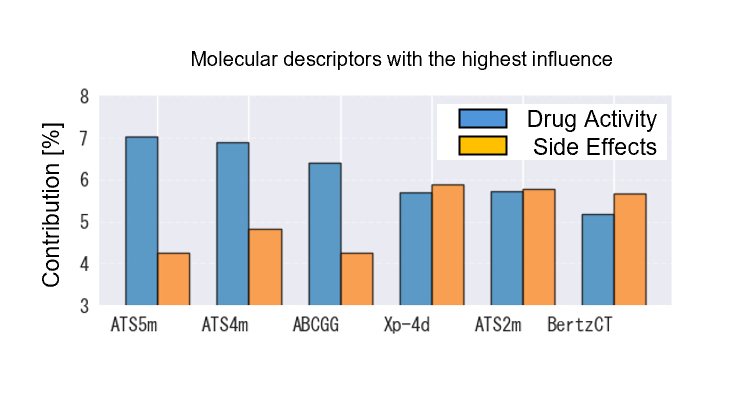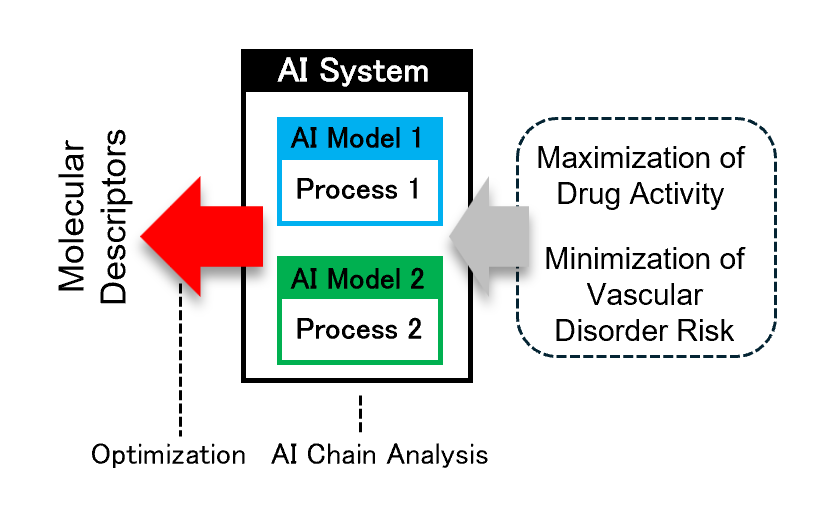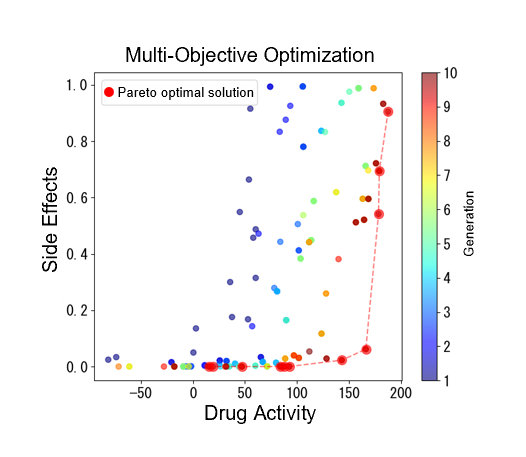Prediction Model Integration and Multi-Objective Optimization in Pharmaceutical Development Using Multi-Sigma®

This case study showcases Aizoth’s Multi-Sigma®, leveraging its AI chain analysis and multi-objective optimization to balance drug activity (pIC50) and side effects for BACE inhibitors, potential Alzheimer’s treatments
1. Prediction of Drug Activity and Side Effects (Risk of Vascular Disorders)
Multi-Sigma’s prediction functionality enables training of AI models using molecular descriptors and biological properties to capture their interrelationship.

2. Factor Analysis of Key Influences on Drug Activity and Side Effects (Risk of Vascular Disorders)
Multi-Sigma’s factor analysis allows the identification of molecular descriptors that contribute to drug activity and the risk of vascular disorders, respectively.


3. Optimization of Drug Activity and Side Effects (Risk of Vascular Disorders)
By combining Multi-Sigma’s AI chain analysis and optimization functionalities, it’s possible to propose combinations of molecular descriptors that maximize drug activity while minimizing the risk of vascular disorders.

Using Multi-Sigma’s AI chain analysis functionality, multi-objective optimization was performed.
As a result, a solution with a drug activity (pIC50 value) of 166.2 and a vascular disorder risk of 0.062 was obtained.

(Note) Dataset: Molecular data obtained from the NCI database and MoleculeNet. Molecular descriptors calculated using the Mordred module.
Also, data sourced from Kaggle (https://www.kaggle.com/datasets/mmelahi/cheminformatics).





